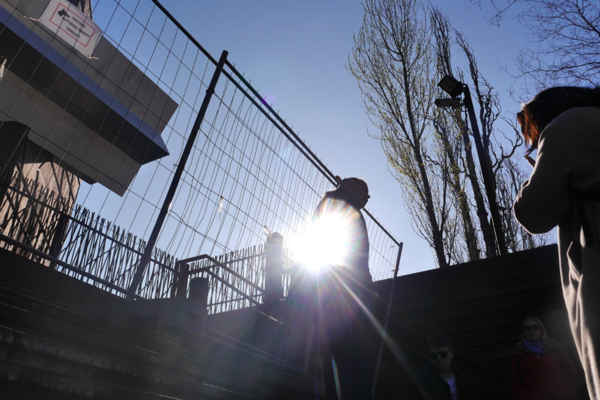On the part of historians, Holocaust educators and Jewish groups there exists well-founded fear about the new museum: namely that it will continue along the lines of a familiar narrative that started with the House of Terror in the centre of town, which opened in 2002 under the directorship of Dr Maria Schmidt. The House of Terror itself is a jarring and bizarre edutainment experience that blends together themed rooms on Hungary’s Nazi and Soviet occupations. The museum is nothing if not solemn, and you could be mistaken for thinking it means well. But look again: there is a political sleight of hand. Nazism, intertwined with Communism. Hungarians are victimised and powerless, their country rid of responsibility. The back of the information leaflet from when I visited thanked Orbán by name for his support.
This is why many Jews, Holocaust historians and educators in Hungary have voiced concerns about the new museum. Dr Schmidt, who assumed the directorship role of the House of Fates, wanted to present a flawed vision of ‘love between Hungarian Jews and non-Jews’ according to an interview with the blog Hungarian Spectrum. Schmidt has claimed that the museum has been subject to an ‘orgy of hate’ from critics, which include the Israeli Holocaust museum Yad Vashem and the United States Holocaust Memorial Museum. Her de facto replacement, Rabbi Slomó Köves, is known for being careful with his words. In an interview with the conservative news website Origo, he has said that Jewish congregations should not take sides in political matters. Attempts to find common ground with the wider Jewish community in Budapest and overseas have been slow and pained, with a number of high-profile organisations giving up on the project entirely.
The greatest fear of amongst many is that Hungary’s inability to recognise its own complicity in the Holocaust gives a carte blanche for Orbán to continue unchecked along the road to authoritarianism. Portraying Hungary entirely the victim of so many years of terror, regardless of whether it is Nazi or Soviet, has become a leitmotif in the rhetoric of Hungary’s popular right. In speaking to the Hungarians who remain critical of the ruling party, Fidesz, there already exists the belief that Orbán rules his country without any real challenge, and that the Országgyűlés has become a rubber-stamp Parliament. ‘There is no democracy any more in Hungary,’ one student told me.
In recent years, Orbán has targeted media freedom, immigrants and academia (most notably, the George Soros-funded Central European University, which is currently in the process of moving across the border to Vienna). Meanwhile, Orbán has keenly espoused a resurgent European and global hard-right, and far-right: most notably, he has a close relationship with the Israeli Prime Minister, Benjamin Netanyahu, and has praised Brazil’s Jair Bolsonaro.
For all of the political clamor that surrounds the museum and all it represents, it is still a quiet place: not for long, if we’re to believe the Hungarian Prime Minister’s office. A statement from September promised opening later this year.
In addition to studying History at Lincoln College, Edward Rhys Jones is a Regional Ambassador for the Holocaust Educational Trust.
A version of this article first appeared in the Cherwell in 2019.
34 replies